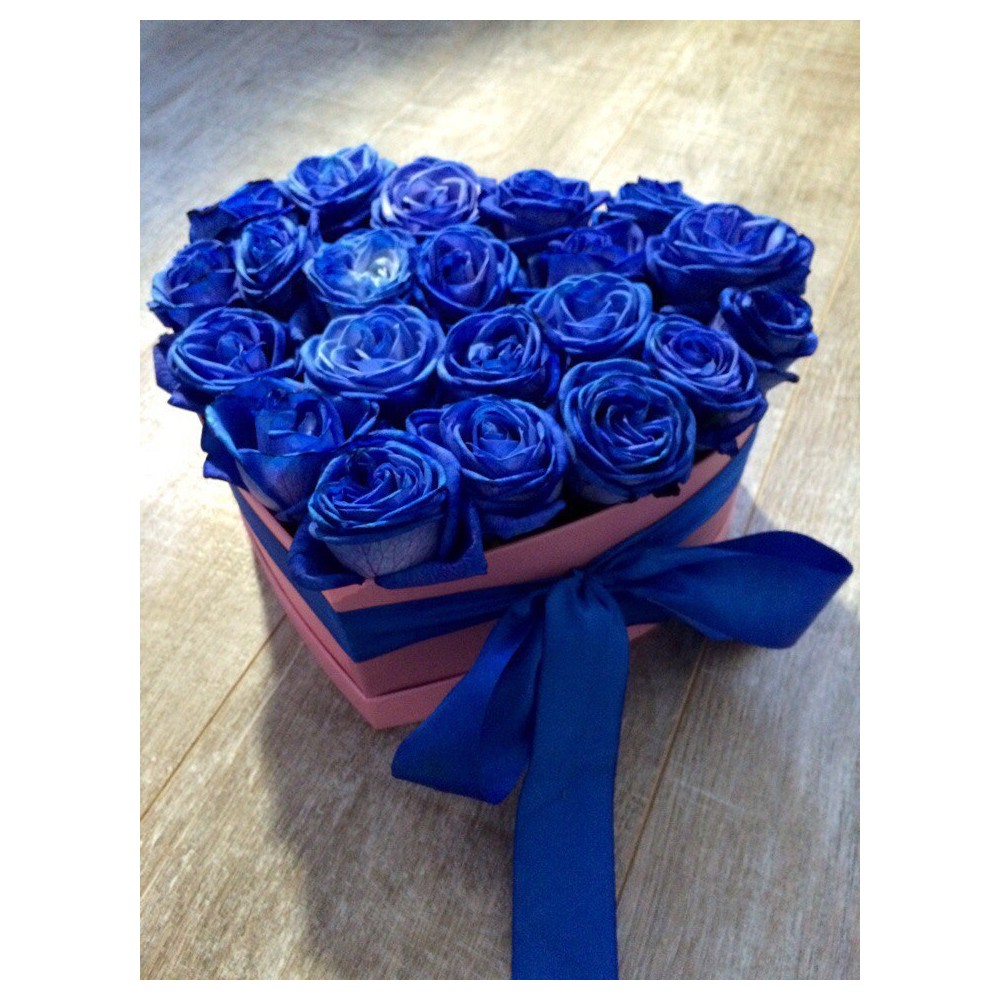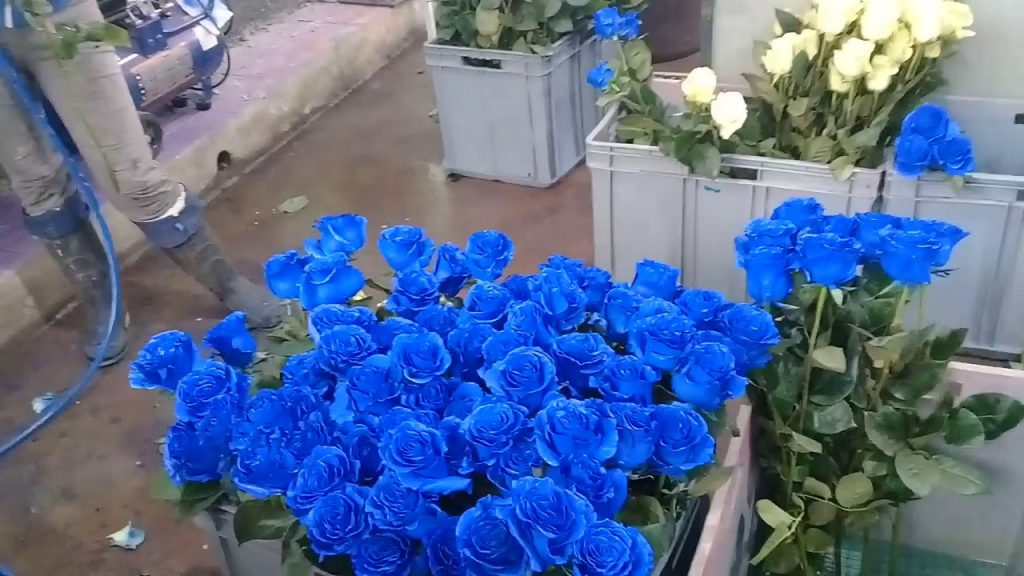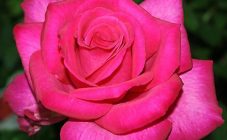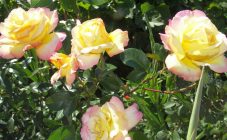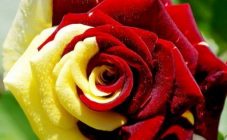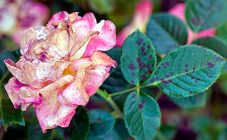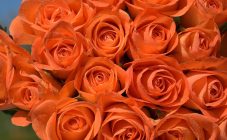Content:
For several centuries, scientists have been trying to bring out a rose with blue petals, but the flower appeared on the shelves only 18 years ago. After the sale of a large batch, the plant with blue petals disappeared from sale again. It is not for nothing that blue roses are considered a symbol of an unattainable ideal.
The history of blue roses
They began to take interest in the possibility of breeding blue roses in the 12th century. They tried to introduce blue pigments into the root system of plants. In some historical records, there is information that bushes painted in this way had lilac-gray petals. A miracle was not destined to happen, and during that period of time people never saw a plant with blue buds.
The next attempt at breeding a thorny plant was the emergence of the Blue Moon variety, which was obtained through a hybridization method. In this case, the genetic materials of different species were combined in a single cell. As a result, the world saw a magnificent rose with delicate lilac petals.
Only after that, Australian and Japanese scientists, having united their efforts, were able in 2004 to bring out the type of rose, the palette of petals of which belonged to lavender. In the course of long-term work, breeders have incorporated into the cell an additional pair of genes that affect the structural characteristics of the plant. One of the first to be introduced was a pigment called delphinidin. Then the scientists introduced a protein that counteracts the blocking of delphinidin.
Unfortunately, the protein that was introduced by an artificial method could not fully block the internal processes taking place in the plant. Rose petals became owners of a dull color, and the acidity of plants increased sharply, which had a devastating effect on delphinidinum. To implement the idea, we needed copies of flowers that have a low acidity level. Only in 2008 the long-awaited blue rose was bred. However, its color is still difficult to call blue. It is closer to a lavender shade. The variety was named Suntory Flowers, but it was not officially registered.
Are there blue roses
The most popular varieties of roses, whose petals are close to blue, include:
- Blue Girl - lavender roses
- Blue Nile - lilac flowers
- Lady X - mauve plants with thorns
- rose Blue Parfum - lilac-crimson roses;
- Cool Water - lilac-blue flowers (blue is the main shade);
- Charles De Gaulle - Plants with dark lavender petals.
Dark blue roses have a long flowering period. The pointed buds open slowly. Beautiful flowers are naturally endowed with a subtle, but very pleasant aroma. Lavender and lilac petals create a perfect contrast to the semi-glossy green foliage.
Dense branchy bushes can reach a height of 70-75 cm. The width of the shrub does not exceed 60 cm. Roses look spectacular if grown in groups along the paths. Also, between the bushes, one-year low stands or lawn grass will look great. For planting seedlings, sunny areas should be selected. The plant can withstand frosts down to -23 ° C.
High resistance to various ailments is an undoubted advantage. Long, undulating bloom from early June to late October.
How to color roses blue
How to paint flowers? For self-staining a rose in a blue shade, you will need to prepare:
- roses (1 or 3 pieces are required for each flask);
- knife;
- water;
- blue food coloring;
- capacity.
Step by step guide
- For coloring, it is best to purchase roses with white or cream petals. The color of the dye will sit best on a light shade. That is why you should not buy a dark rose variety so that the end result will satisfy your desires. Florists note that the rose of the Wendela variety absorbs the best paint. The stems of the plants should be long so that they can be easily cut.
- Using a sharp knife, a part of the stem is cut off at a 45 ° angle. Next, you need to split the stem lengthwise into parts (2-3), which will allow the plants to absorb liquid well.
- The stems are cut 15-18 cm long. The first step is to cut the green base in half. Each of the halves obtained is again divided and cut equally.
- Blue food coloring is added to clean water, which must first be poured into a deep container, and mixed thoroughly. You will need as many containers as the split parts of the stem of the rose, since each split must be dipped in a separate container with dye.
- For the structure to be stable, it must be installed close to each other. Each split part is folded back slightly and placed in a container filled with dissolved dye.
- Leaving the flower for 28-30 hours in a cool place, you can soon see how the color of the petals has acquired a shade of food coloring. Staining occurs in stages. First of all, the bud becomes emerald, then red spots are added and only after 24-30 hours the petals will reach full color.
- After achieving the desired result, the flowers are removed from the dye jars and placed in vases with clean cool water. You can disguise the cut ends with a bright ribbon.
Growing a blue rose in a flask
What could be more pleasant than a blue rose in a flask? How to properly grow a blue rose in a flask and how much is it possible to do it yourself? Below are detailed instructions that will help you create unique beauty.
To grow a flower in a flask, you will need to prepare:
- roses;
- some greenery;
- glass flask;
- a flower stabilizer, which can be wax, hairspray, or glycerin;
- food coloring, if necessary;
- threads and tweezers;
- water.
Flowers for the composition are chosen with great care. Roses should be fresh, beautiful, full blooming with strong stems and dense petals.
Stabilization with glycerin is considered to be one of the best methods to keep the petals natural, shape and glossy.
- Freshly cut roses are slightly dried (about 60-120 min.).
- The slices should be 40 mm below the buds.
- Glycerin is diluted in boiled warm water in a 1: 1 ratio. If you need to touch up the petals, you can add a little food coloring to the liquid.
- The roses are immersed in the solution in such a way that the glycerin is absorbed through the stems.
- Every 48 hours, the stems are shortened by 10 mm using a sharp knife. The ends of the stems are split to allow moisture to easily penetrate the flowers.
- Roses stand in glycerin liquid for 7-14 days. Only then can you make compositions with flowers.
Working with wax:
- Flowers dried after a glycerin solution are taken with tweezers and immersed in melted wax.After that, the roses can be dipped in a container with cool water.
- Using wax, it is possible to achieve hardening of plants with thorns, which is very important for making a composition.
Stabilization with hairspray:
- Extra petals are removed from the flowers.
- Plants are placed in a container filled with rice groats for 7 days. This allows the roses to shed excess moisture.
- After a specified period of time, the flowers are sprayed with hairspray and hung by the stems to dry.
In specialized stores, you can buy flasks with lids or, if you wish, do it yourself. To do this, you will need to pick up a dense glass container with a narrowed neck, on which there are no cracks or chips. The vessel will be able to protect the plant from temperature extremes and prevent dust from settling. Further:
- A glass vessel is thoroughly washed under running water and degreased with a special compound.
- To evacuate air, you need a vacuum pump.
- It is important to come up with a cover to maintain tightness.
Further combination of components:
- The stabilized roses are fixed to the bottom of the flask.
- The composition is complemented by greenery. Stabilized moss can be added if desired.
- A vacuum pump evacuates excess air from the flask. The container is tightly closed with a lid. If this is not done, you can provoke a premature fading of the composition.
If you wish, you can use the original method and hang the roses up with stems. To do this, you will need to wrap the ends with thread and fix it with glue at the top of the flask. The threads can be hidden in greenery. Such a creation will exist for a long time, and it is very easy to care for it. You only need to occasionally wipe the flask from dust.
Blue roses are a real miracle of nature. Bright flower bouquet will pleasantly surprise and delight the recipient of flowers. Having composed a composition in a flask, you can leave a memory of an unexpected gift for a loved one for a long time.
